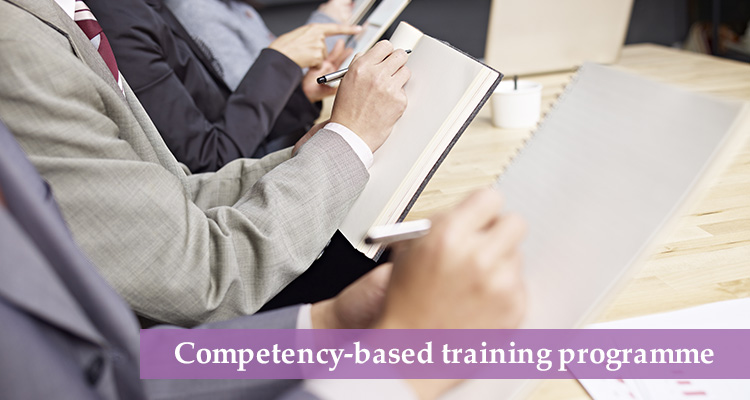[Blog 42] Adopt a customised competency-based training programme for more effective learning

With the extensive publicity on the importance of upskilling the workforce, many organisations have tried to jump on the bandwagon.
However, many are not able reap the effectiveness of these learning and development sessions when the employees are tasks to implement what they have learnt within the organisation. These generic training sessions are unlikely the kind of training programs you would want to invest in if you are looking to transform or make dynamic changes within your organisation.
Each organisation has different challenges, needs, aspirations and future objectives. When employees attend a generic training or continuing education programs, it is wishful thinking to expect them to connect and implement what they have learned in the organisation. Thus, leading to nowhere.
It will be more prudent and wise to invest in training solutions that are competency-based and which can be customised to the needs of the organisation. The basic feature of a competency-based training program is that the learning outcome is held constant throughout the entire learning process which will be measured on the learning objectives achieved rather than time. In a customised competency-based training program, your employees will progress through the training based on their skills and competencies achieved and not the time spent to complete the course.
If implemented correctly, competency-based training programs can significantly improve the consistency and quality of learning, reduce cost for the organisation and provide you with true measures of employee learning.
Below are the some suggestions to adopt when implementing a competency-based training program:
1. Measure employee learning outcomes not the time
As a HR advisor to your organisation, always focus on the learning outcomes achieved and how it positively impacts the employee’s performance at work. It is critical to allow flexibility to move through the training program based on the skills of the employee. Some employees may be faster/slower than others depending on where they are at the competency level. The employees should also be able to learn modules and conduct exercises in any order they like. Each activity/assessment throughout the training program will be graded. If learners respond to each other’s help questions, make them leaders in their area. This gives their peers the idea of exemplary behaviour and performance. This is the beauty of a competency-based training program. You must always remember; your employees are working professionals who are going through this training alongside their daily tasks/projects they are working on. The training sessions should be accepted as a value add to their work so they are encouraged by the importance of learning and how it can help them.
2. Implementing Technological tools to sustain effective learning
Bearing in mind the busy schedule of each employee across the organisation, it will be no easy task to get everyone physically present for discussions all the time. Therefore, an effective solution to this would be to use technology to facilitate your training program. Learners should have the option to submit their assignments using educational technology tools. There are organisations that create course pages/blogs using social media platforms for all employees to communicate. By doing this, you will be re-creating a virtual workspace to facilitate learning.
3. Focus on Employees learning progress
In the competency-based training sessions, the trainer acts like a mentor and guide who redirects conversations to contextualise and transfer knowledge according to the employee’s work context. In this way there is a connection to the competencies taught and how it can be implemented. In a competency-based training session, each session will be different from another as it will differ based on the employee’s sharing of knowledge and experience and how they relate to the competencies shared.
4. Assess employees on competencies
Competencies can also be seen as KPIs that defines employee’s performance in the organisation. Align these competencies to the organisation’s/department’s performance objectives and provide opportunities for employees to take on tasks/projects to practise what is being taught so that these can be assessed and evaluated. The assessments are a gauge of how individual employees comprehends and implements the strategies taught throughout the learning process.
Always involve line managers/HODs to assess the employees so that the feedback for improvement can be reinforced. Should an employee get a low grade in an assessment, the HR team can work with line managers to increase reinforcement activities to improve the employee. This focused learning strategy saves not only time, but it creates a positive work culture where everyone learns from one another.
Do adopt the competency-based training program to increase effective learning, employee skills and knowledge and decrease cost, time and redundant effort spent to assess employees on areas which charts no direction for the organisation moving forward.
Contact HRguru today to access our deep HR experience and practical real-life solutions to solve your business HR needs. Learn more about HRguru Academy, from improving people management skills to training an entire workforce, our workshops, seminars, in-house programmes, keynotes and exclusive client events provide continuing education, strategic outreach and networking to bring out the best in your people and your organisation. Contact us now at contactus@hrguru.com.sg. You must also check out our recently released book – Nothing Surprises Me, I work in HR for more insights on our Chief Guru Tommy Ng personal journey in HR. Definitely a book every HR Leaders should have!







